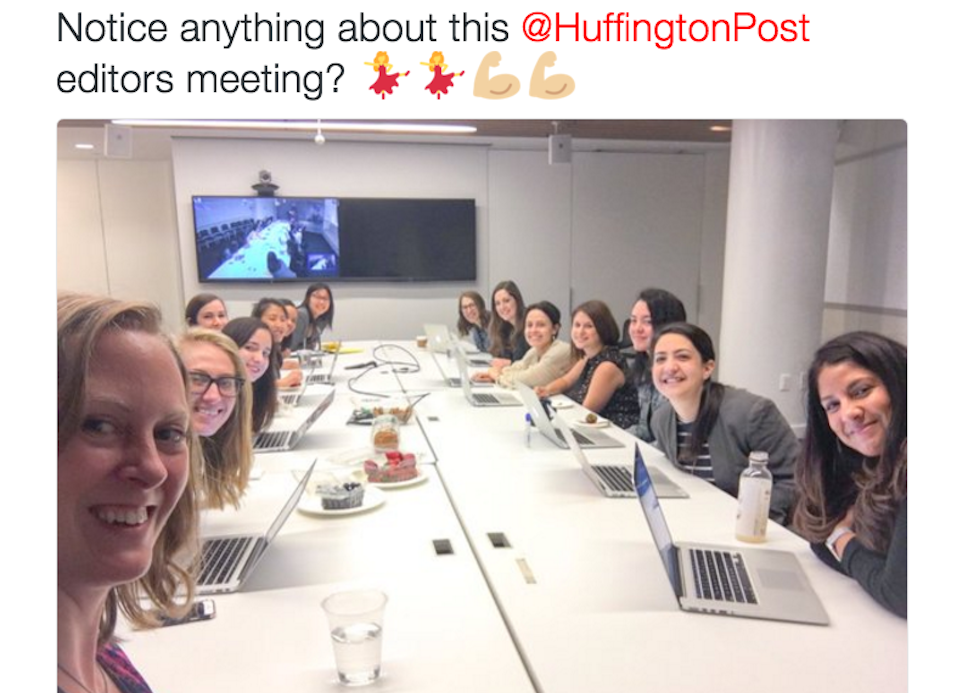
If you’re a professional and a person of color in America, chances are you’ve been part of at least one meeting, a team or a department where yours was one of (if not) the only [insert race or culture] face in the crowd.
Yet, the National Center for Public Policy and Higher Education reports, “In the U.S., the white portion of the working-age population (generally ages 25 to 64) is declining, while the minority portion is increasing.”
While we’d like to think that our personal experience is the exception and not the rule, the picture below tweeted recently by Liz Heron, Executive Editor at the Huffington Post, seems to spit in the face of this statistic.
Notice anything about this @HuffingtonPost editors meeting? pic.twitter.com/7sg4SyraPa
— Liz Heron (@lheron) May 20, 2016
To answer Ms. Heron’s question, we notice much about this editors meeting. While we give kudos to the solid representation of women, we’re disturbed by the poor representation of people of color.
Even more disconcerting is the fact that in this room sits many who decide which stories are worth sharing and whose voices will tell them. In an organization that draws in more than 200 million unique visitors a month; she who controls whose story is told, shapes reader perception. For those who are saying that this group of women aren’t execs or CEOs and don’t move the financial needle of the company, remember that power can be just as much about who controls the narrative as about who controls the purse strings.
And that is at the heart of my issue with this photo. It’s such a vivid reminder that those climbing fastest or currently highest on the power pyramid – the key decision makers – rarely look anything like the changing American landscape. In 2014, nonwhites accounted for 38 percent of the U.S. population, but those who hold the power to shape multimillion dollar companies are barely a blip on the radar.
An article posted, ironically, on the Huffing Post found just over 4 percent of Fortune 500 CEOs in 2014 were minorities, a classification including African-Americans, Asians, and Latin-Americans.
To underscore the significance of the power of those in control of the finances as an example, according to Fortune magazine: “In total, the Fortune 500 companies account for $12.5 trillion in revenues, $945 billion in profits, $17 trillion in market value and employ 26.8 million people worldwide.”
Whether 100, 250, or 500 – whatever the Fortune ranking of companies of total revenues for their respective fiscal year – minority representation in key leadership roles is practically nonexistent.
With so few minorities governing the path of these companies, our collective power to see real change that will elevate the social economic status of the masses and not just the few, is significantly diminished.
While we should celebrate–loudly–the people of color who make it into the door; we should never be satisfied with diversity in just the cubicles. We need equal representation at the decision tables. We can start with one voice, then push for two, and continue for three. However, may we never stop until companies such as the Huffington Post are tweeting photos that represent a racially and culturally diverse group of decision makers.


